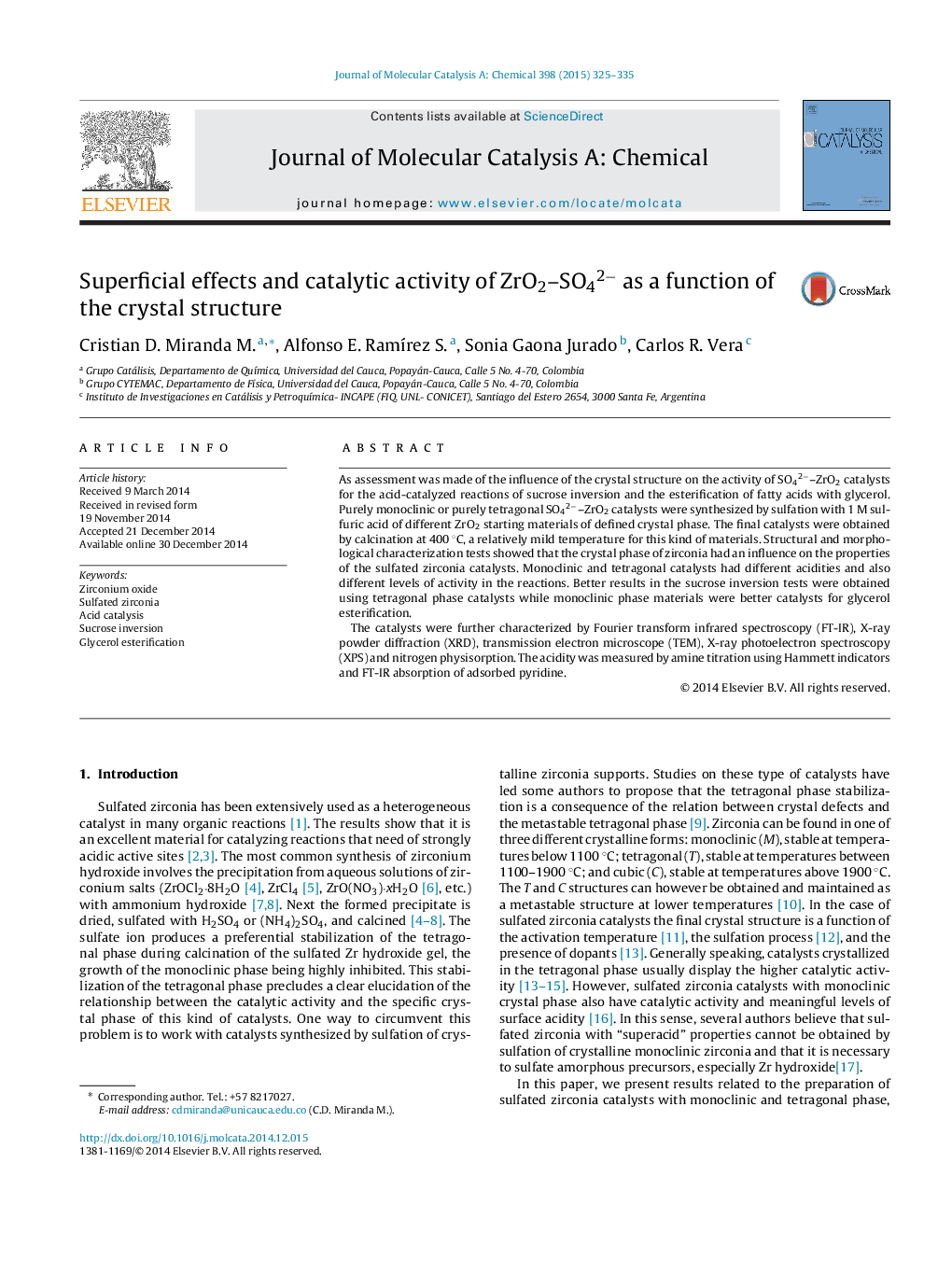| Article ID | Journal | Published Year | Pages | File Type |
|---|---|---|---|---|
| 65230 | Journal of Molecular Catalysis A: Chemical | 2015 | 11 Pages |
•The structural characteristics of ZrO2–SO42− depend on the precursor zirconia phase.•Properties like the acidity type depend on the phase type of zirconia.•The catalytic activity is related to the phase type and class of reaction too.
As assessment was made of the influence of the crystal structure on the activity of SO42−–ZrO2 catalysts for the acid-catalyzed reactions of sucrose inversion and the esterification of fatty acids with glycerol. Purely monoclinic or purely tetragonal SO42−–ZrO2 catalysts were synthesized by sulfation with 1 M sulfuric acid of different ZrO2 starting materials of defined crystal phase. The final catalysts were obtained by calcination at 400 °C, a relatively mild temperature for this kind of materials. Structural and morphological characterization tests showed that the crystal phase of zirconia had an influence on the properties of the sulfated zirconia catalysts. Monoclinic and tetragonal catalysts had different acidities and also different levels of activity in the reactions. Better results in the sucrose inversion tests were obtained using tetragonal phase catalysts while monoclinic phase materials were better catalysts for glycerol esterification.The catalysts were further characterized by Fourier transform infrared spectroscopy (FT-IR), X-ray powder diffraction (XRD), transmission electron microscope (TEM), X-ray photoelectron spectroscopy (XPS) and nitrogen physisorption. The acidity was measured by amine titration using Hammett indicators and FT-IR absorption of adsorbed pyridine.
Graphical abstractThe paper reports the synthesis of zirconium oxide in two different phases and the treatment of these with sulfuric acid. The main challenge is to show that structural and morphological properties of sulfated zirconia, ZrO2–SO42− depend on the phase type of zirconia. We strongly believe that these results could be of general interest as well as for chemists than for materials since the development of highly stable solids for process like sulfation able to takes a large part of chemistry of materials in future.Figure optionsDownload full-size imageDownload high-quality image (175 K)Download as PowerPoint slide
